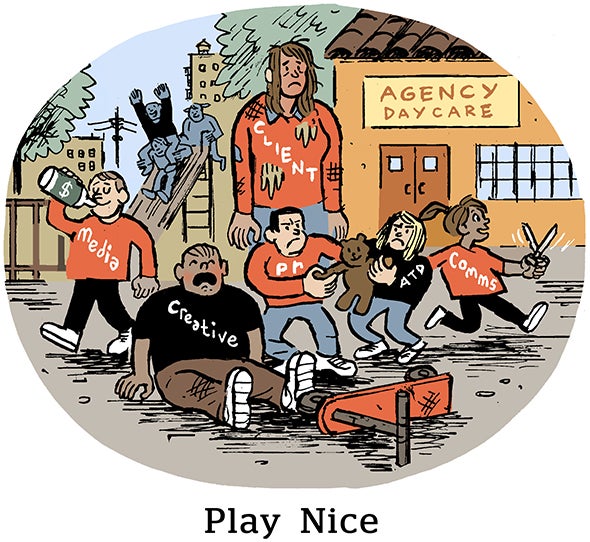Here’s today’s AdExchanger.com news round-up… Want it by email? Sign up here.
How Amazon Ads Keeps Winning
A recently ballyhooed eMarketer stat estimates current retail media advertising at more than $45 billion and on its way to $100 billion by the end of 2026.
That may be true, but it misses some crucial context. Of the $45 billion, about $40 billion went to Amazon.
And Amazon is making a big investment right now in ecommerce, doubling its same-day delivery warehouses, Bloomberg reports. That move sets Amazon up to continue to dominate retail media.
Meanwhile, Walmart, Target and Kroger lean on physical stores for “click-and-collect” or “buy online, pick up in store” ecommerce sales. That approach offers an edge, sure, since fulfillment eats up profit margins.
But Amazon’s wherewithal to tackle same-day delivery makes its ads much higher converters and more durable amid change. Without warehousing and delivery, big retailers are chained to brick-and-mortar. If stores close, the ad biz crumples.
The same was true of Amazon’s entertainment investments. Walmart has the deep pockets that could make it spin up a major Hollywood studio practically overnight, and Target could buy Roku – if they were like Amazon.
But what older retailers don’t have is the stomach for tough bets that take years to pay off. That’s the Amazon edge.
Bad Inventory
Agencies are fed up with YouTube’s lack of transparency – not that they’ll do anything about it – Digiday reports.
Google Video Partners (GVP), the YouTube offsite ad network, has been under tough scrutiny since a recent Adalytics report alleging major ad viewability, brand safety and verification failures.
For another thing, ad buyers have opened their ears to problems of audibility, not just viewability. Many who thought their ads auto-played with sound were sorely disappointed.
The scandal hasn’t affected YouTube’s revenues … yet. In Q2, the video-sharing platform reported $7.7 billion in ad revenue, a modest 4.4% YOY increase.
But what can advertisers do about it, anyway?
Frustrated as they are about the lack of control and visibility when it comes to YouTube and GVP, advertisers – and agency execs, in particular – are wary of making waves with Google.
Marketers depend on Google and won’t risk fundamentally upsetting the account. Proven by the fact that each of the 13 sources who spoke to Digiday spoke on condition of anonymity.
A New Order
Warner Bros. Discovery still isn’t done restructuring.
After Warner Media bought Discovery, ad sales execs began jumping ship, with the latest resigning last week. Clearly, something isn’t working, so WBD announced another reorg to its ad sales structure on Monday, Insider reports.
WBD is paring back its approach of selling ads in content bundles (sports, news, home and design) to instead let advertisers buy network brands, such as TNT or Adult Swim.
Until now, WBD packaged inventory by target audiences – but it was not finely targeted and simply outdated, with options like the “male bundle.”
The broadcaster is also switching up its sales department to reflect how it sells ads.
Sales leaders will now be assigned to agency holding companies, similar to how other broadcasters organize their sales teams. This structure should limit the number of salespeople advertisers need to speak with to get a campaign off the ground.
But Wait, There’s More!
DoubleVerify intends to acquire European AI-focused ad tech firm Scibids in a $125 million deal. [Insider]
Microsoft Advertising goes through “transformation,” including a rebranding (or de-branding) of Xandr and PromoteIQ. [MediaPost]
How generative AI has shown up in earnings chatter again this quarter. [Digiday]
Vice Media was bought post-bankruptcy by former lenders, now valued at $350 million. [Variety]
Budgets for enterprise tech and IT are surprisingly stable, but vendors are struggling. [TechCrunch]










